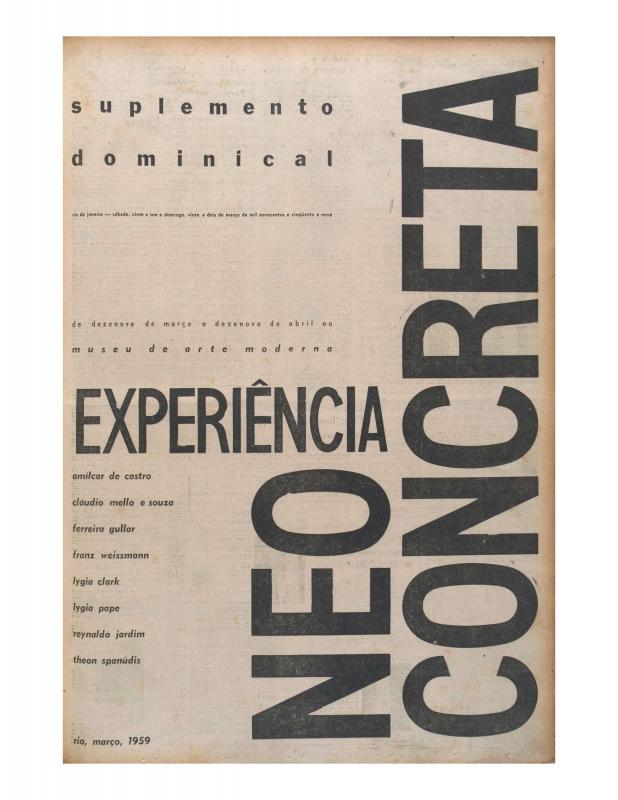The ABC collection – Arte Brasileira Contemporânea, launched by FUNARTE (Fundação Nacional da Arte) in 1978 became a key bibliographic reference on Brazilian art of the 1960s and 1970s. During its 16 years, the series published small volumes on artists such as Anna Bella Geiger, Carlos Vergara, Rubens Gerchman, Arthur Barrio, Antonio Dias, Wesley Duke Lee, Lygia Clark, Cildo Meireles, Waltércio Caldas, Lygia Pape and Antonio Manuel. Its authors include: Ronaldo Brito, Paulo Sérgio Duarte, Fernando Cocchiarale, Hélio Oiticica, Mário Pedrosa, Paulo Venâncio Filho, Frederico Morais and Ferreira Gullar, among others.
Lygia Pape arose on the arts circuit in Rio de Janeiro during the 1950s, and was linked to both abstract and concrete art. The artist was one of the key members of the Neo-concrete art movement and would play an important role in the experimental poetry of the 1960s within the Nova Objetividade Brasileira (1967), and in the 1970s she became one of the principal contemporary artists of Brazil. [For more on the Neo-concrete movement, see these texts in the ICAA digital archive: by Ronaldo Brito “Neoconcretismo” (doc. no. 1091308); and by Ferreira Gullar et al. “Manifesto Neoconcreto” (doc. no. 1110328)].
Mário Pedrosa (1900–81) was an intellectual and politician, and undoubtedly the key theoretician and critic on Brazilian art of the 20th century. He began as an international politics correspondent for the Diário da Noite, and beginning in the 1920s he was affiliated with the PCB (Communist Party of Brazil). He was imprisoned in 1932 because of his political militancy (Trotskyism). During the Estado Novo of Getúlio Vargas, he lived in exile in France and New York, and only returned to Brazil after the Second World War, when he worked for the Correio da Manhã. His stance against Stalinism led him to found the Vanguarda Socialista, a weekly publication. He presented a thesis on aesthetics called “Da natureza afetiva da forma na obra de arte” (1949) at the School of Architecture (Rio) that made use of his philosophical background, and his knowledge of Gestalt psychology; during that time he was also one of the founders of the AICA (1948) and also organized the International Conference of Art Critics (Brasilia, 1959). He wrote an arts column for the Tribuna da Imprensa (1950–54) and was an organizing member of the II and III São Paulo Biennials (1953 and 1955), later becoming director of the MAM-SP (1961–63). He served as secretary for the National Council of Culture during the brief government of Jânio Quadros. During the military dictatorship he took refuge in Chile, where he became director of the Museo de la Solidaridad in Santiago; after the Pinochet coup (1973), he left for Havana, where he served as secretary for the Museo de la Resistencia Salvador Allende. He only returned to Brazil in 1977 (at the beginning of the amnesty) and was the first to sign the manifesto creating the PT (Party of Workers, 1980). His vast library (which included eight thousand volumes) is partially available at the national library in Rio de Janeiro.


